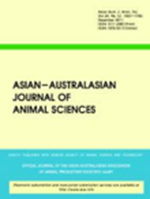During embryo implantation in pigs, the uterine endometrium undergoes dramatic morphological and functional changes accompanied with dynamic gene expression. Since the greatest amount of embryonic losses occur during this period, it is essential to understand the expression and function of genes in the uterine endometrium. Although many reports have studied gene expression in the uterine endometrium during the estrous cycle and pregnancy, the pattern of global gene expression in the uterine endometrium in response to the presence of a conceptus (embryo/fetus and associated extraembryonic membranes) has not been completely determined. To better understand the expression of pregnancy-specific genes in the endometrium during the implantation period, we analyzed global gene expression in the endometrium on day (D) 12 and D15 of pregnancy and the estrous cycle using a microarray technique in order to identify differentially expressed endometrial genes between D12 of pregnancy and D12 of the estrous cycle and between D15 of pregnancy and D15 of the estrous cycle. Results showed that the global pattern of gene expression varied with pregnancy status. Among 23, 937 genes analyzed, 99 and 213 up-regulated genes and 92 and 231 down-regulated genes were identified as differentially expressed genes (DEGs) in the uterine endometrium on D12 and D15 of pregnancy compared to D12 and D15 of the estrous cycle, respectively. Functional annotation clustering analysis showed that those DEGs included genes involved in immunity, steroidogenesis, cell-to-cell interaction, and tissue remodeling. These findings suggest that the implantation process regulates differential endometrial gene expression to support the establishment of pregnancy in pigs. Further analysis of the genes identified in this study will provide insight into the cellular and molecular bases of the implantation process in pigs.


